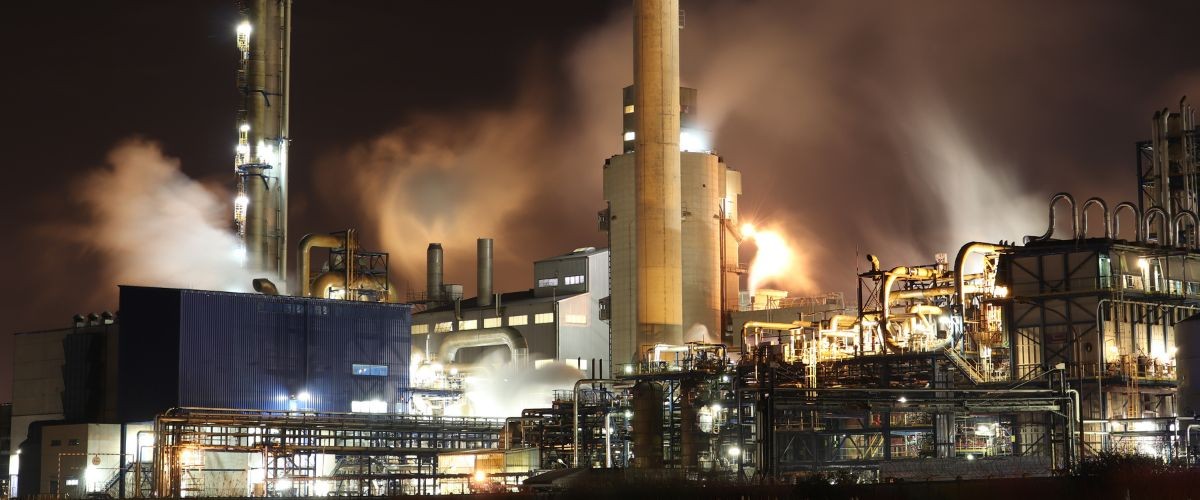Tech-Driven Transformation: The Changing Landscape of the Oil and Gas Sector
Did you know that the oil and gas industry, often considered the cornerstone of the global economy, is currently undergoing a profound and transformative shift? This transformation is projected to not only create a market worth $2.5 trillion but also generate 1.7 million new jobs by 2025. The significance of this industry and its ongoing transformation cannot be overstated, as it holds the key to unlocking untapped potential, driving operational efficiency, and fostering sustainable growth. To thrive in an ever-evolving landscape, digital transformation in oil and gas industry is not just a choice but a necessity. It opens up a world of possibilities, from accurately predicting equipment failures and optimising production processes to streamlining supply chain management and fortifying safety protocols.
However, the benefits of digitisation in oil and gas industry go beyond immediate financial gains. It also presents a unique opportunity for the industry to address critical environmental concerns and transition towards a more sustainable future. By fully embracing digital solutions, companies can minimise their environmental impact, optimise energy consumption, and adopt innovative practices that promote long-term environmental sustainability.
Now is the time for the oil and gas industry to embark on a transformative digital journey, unlocking a realm of possibilities. In this blog, we will delve into the immense power of digital transformation and its capacity to shape the future of the oil and gas industry as we explore the innovative technologies and strategies driving this industry forward and discover how digital transformation is revolutionising the way we operate, conserve resources, and build a sustainable future.
Impact of Digital Transformation on Business Processes and Operations
1. Operational Efficiency:
Digital transformation streamlines processes, eliminates manual tasks, and reduces human error. It enables real-time monitoring, predictive maintenance, and asset optimization, leading to increased operational efficiency and reduced downtime.
2. Safety and Environmental Sustainability:
Digital technologies enhance safety by enabling real-time monitoring of assets, detecting potential risks, and implementing preventive measures. They also facilitate environmental sustainability by optimising energy consumption, reducing carbon emissions, and improving waste management practices.
3. Decision-Making and Planning:
Digital transformation provides accurate and timely data insights for informed decision-making. It enables scenario modelling, risk analysis, and predictive analytics, supporting effective planning and resource allocation.
4. Collaboration and Communication:
Digital technologies enable seamless collaboration and communication across teams and locations. Remote monitoring, video conferencing, and cloud-based platforms enhance information sharing, knowledge transfer, and collaboration among stakeholders.
Key Areas of Digital Transformation in the Oil and Gas Industry
With the increasing demand for energy and the need for operational efficiency, oil and gas companies are embracing digital technologies to optimise their processes. In this section, we will explore the key areas where digital transformation is making a significant impact in the industry.
1. Exploration and Production:
-
Use of advanced data analytics for reservoir characterization and optimisation:
In the exploration and production phase, accurate reservoir characterization is crucial for maximising hydrocarbon recovery. Digital transformation has enabled the integration of advanced data analytics techniques, such as machine learning and artificial intelligence, to analyse seismic data, well logs, and oil and gas production process history. These analytics tools provide valuable insights into reservoir behaviour, enabling companies to optimise drilling and production operations for improved recovery rates and reduced costs.
-
Integration of Internet of Things (IoT) devices for real-time monitoring and predictive maintenance:
IoT devices, such as sensors and connected equipment, are being widely deployed in the oil and gas industry to enable real-time monitoring of assets. By collecting and analysing data from various equipment, IoT devices offer valuable insights into asset performance, enabling predictive maintenance and minimising downtime. This proactive approach helps prevent equipment failures, optimise maintenance schedules, and improve overall operational efficiency.
2. Supply Chain and Logistics:
-
Adoption of blockchain technology for secure and transparent transactions:
The oil and gas supply chain involves complex transactions between multiple stakeholders, including suppliers, transporters, and customers. Blockchain technology provides a decentralised and immutable ledger, ensuring secure and transparent transactions. By implementing blockchain, companies can enhance traceability, reduce fraud, streamline documentation processes, and improve overall supply chain efficiency.
-
Implementing advanced analytics for demand forecasting and inventory management:
Accurate demand forecasting and efficient inventory management are critical for optimising supply chain management in oil and gas industry. Digital transformation has enabled the implementation of advanced analytics tools, such as predictive modelling and machine learning algorithms, to analyse historical data, market trends, and customer behaviour. These tools enable companies to make data-driven decisions, minimise inventory costs, reduce stockouts, and improve customer satisfaction.
3. Health, Safety, and Environment:
-
Utilising drones and robotics for remote inspections and monitoring:
Drones and robotics are transforming the way inspections and monitoring are conducted in the oil and gas industry. These technologies enable remote inspections of offshore platforms, pipelines, and other critical infrastructure, minimising the need for human presence in hazardous environments. By leveraging drones and robotics, companies can improve worker safety, reduce inspection time and costs, and enhance overall operational efficiency.
Implementing artificial intelligence for risk assessment and incident prevention:
-
AI in identification and mitigation:
Artificial intelligence (AI) is playing a vital role in identifying and mitigating risks in the oil and gas industry. AI-powered algorithms analyse vast amounts of operational data to identify patterns, anomalies, and potential safety hazards. By proactively identifying risks, companies can implement preventive measures, enhance safety protocols, and minimise the likelihood of incidents and accidents.
Challenges and Considerations in Digital Transformation
While digital transformation offers significant benefits to the oil and gas industry, it is not without its challenges and considerations. Implementing digital technologies and driving organisational change require careful planning and addressing various factors.
1. Data security and privacy concerns:
One of the primary challenges in digital transformation is ensuring the security and privacy of data. With the increased use of connected devices, sensors, and cloud-based systems, the volume and sensitivity of data being collected and processed are growing exponentially. Oil and gas companies need to prioritise robust cybersecurity measures, including encryption, access controls, and monitoring systems, to safeguard their data from cyber threats and unauthorised access. Compliance with data privacy regulations, such as GDPR and CCPA, is also essential to maintain trust with stakeholders.
2. Legacy system integration and change management:
The oil and gas industry has a complex IT landscape with numerous legacy systems and infrastructure. Integrating new digital technologies with existing systems can be challenging. Legacy systems may not be designed to communicate or share data effectively, requiring significant effort to bridge the gap between old and new systems. Additionally, managing organisational change is crucial to ensure smooth adoption of digital transformation initiatives. Effective change management strategies, including training programs and clear communication, are necessary to address resistance and foster employee buy-in.
3. Workforce upskilling and cultural shift:
Digital transformation requires a skilled workforce capable of leveraging new technologies and embracing a data-driven culture. However, the oil and gas industry faces a shortage of digital skills and competencies. Companies need to invest in training and upskilling programs to equip their employees with the necessary digital literacy and technical expertise. Additionally, fostering a culture of innovation and experimentation is vital for successful digital transformation. Encouraging collaboration, rewarding creativity, and promoting a growth mindset can help overcome cultural barriers and drive the adoption of digital solutions.
4. Regulatory and compliance considerations:
The oil and gas industry operates within a highly regulated environment, and digital transformation initiatives must comply with relevant industry standards and regulations. Implementing digital technologies may require companies to navigate complex regulatory frameworks, obtain permits, and ensure compliance with safety and environmental regulations. It is essential to have a thorough understanding of the regulatory landscape and engage with relevant stakeholders to address any compliance considerations early in the digital transformation process.
5. Ageing Infrastructure:
The oil and gas industry is built upon a vast infrastructure that has been in operation for decades. As these assets age, maintenance and operational inefficiencies become increasingly prevalent. However, digital transformation provides a lifeline. By implementing sensor technology, companies can monitor the condition of critical equipment in real-time. Predictive maintenance algorithms, powered by artificial intelligence, can detect potential failures before they occur, minimising downtime and optimising asset performance.
6. Safety and Sustainability Practices:
Safety and sustainability are paramount concerns in the oil and gas industry. Digital transformation plays a pivotal role in enhancing safety protocols and promoting sustainability practices. IoT devices and wearable technologies enable real-time monitoring of personnel, ensuring their well-being in hazardous environments.
Case Studies: Successful Digital Transformation Initiatives
Digital transformation has revolutionised the oil and gas industry, enabling companies to enhance operational efficiency, improve decision-making, and drive innovation. Here we are exploring three case studies of successful digital transformation initiatives by prominent players in the industry.
1. ExxonMobil: Leveraging big data analytics for reservoir modelling
ExxonMobil, one of the largest publicly traded international oil and gas companies, has embraced digital transformation to optimise reservoir characterization and maximise hydrocarbon recovery. By leveraging big data analytics, ExxonMobil has been able to analyse vast amounts of seismic data, well logs, and production history to build sophisticated reservoir models. These models enable accurate predictions of reservoir behaviour, identify optimal drilling locations, and optimise production strategies. By utilising data-driven insights, ExxonMobil has achieved higher production rates, reduced costs, and improved overall operational efficiency.
2. Chevron: Implementing IoT devices for asset monitoring and maintenance
Chevron, a global company in the energy sector, has successfully implemented Internet of Things (IoT) devices for asset monitoring and maintenance. By deploying sensors and connected devices on critical equipment, Chevron can gather real-time data on asset performance, health, and maintenance needs. This data is transmitted to a central system where advanced analytics algorithms analyse it for potential issues or anomalies. By adopting a predictive maintenance approach, Chevron can identify equipment failures before they occur, schedule maintenance proactively, and minimise costly downtime. This initiative has significantly improved asset reliability, reduced maintenance costs, and increased overall operational efficiency for Chevron.
3. Shell: Embracing digital twin technology for predictive maintenance and optimization
Shell, a leading energy company, has embraced digital twin technology as part of its digital transformation journey. A digital twin is a virtual replica of a physical asset or system that allows real-time monitoring and simulation. Shell utilises digital twin technology to create virtual models of its equipment, enabling predictive maintenance and optimization. By continuously monitoring and analysing data from the physical assets and comparing it with the digital twin, Shell can detect potential issues, simulate different operating scenarios, and optimise performance. This approach has led to reduced maintenance costs, improved asset reliability, and enhanced operational efficiency for Shell.
Emerging technologies shaping the future of digital transformation:
The oil and gas industry is witnessing the emergence of several technologies that have the potential to revolutionise digital transformation initiatives. These technologies include:
1. Internet of Things (IoT): IoT solutions for oil and gas industry are becoming increasingly prevalent, connecting assets, equipment, and infrastructure. The growing adoption of IoT enables real-time monitoring, predictive maintenance, and enhanced operational efficiency.
2. 5G Connectivity: The deployment of 5G networks will facilitate faster data transfer, lower latency, and enable the seamless connectivity of a vast number of IoT devices. This will unlock new possibilities for real-time data analytics, remote operations, and improved decision-making.
3. Augmented Reality (AR) and Virtual Reality (VR): AR and VR technologies have the potential to transform training, simulation, and remote collaboration in the oil and gas industry. They can enable immersive experiences, enhance safety training, and optimise maintenance and inspection processes.
4. Artificial Intelligence (AI) and Machine Learning (ML):
AI and ML algorithms can analyse vast amounts of data to identify patterns, predict equipment failures, optimise production processes, and automate decision-making. They can also enhance safety by detecting anomalies and identifying potential hazards.
5. Big Data Analytics:
The oil and gas industry generates massive volumes of data. Advanced analytics techniques can extract valuable insights from this data, enabling companies to optimise exploration and production, improve supply chain management, and enhance reservoir modelling and forecasting.
6. Cloud Computing:
Cloud-based platforms offer scalable storage, computational power, and collaboration tools. They enable real-time data sharing, remote monitoring, and analysis, providing flexibility and efficiency in data management and enabling collaboration across locations.
Conclusion
To recap, digital transformation has become a strategic imperative for the oil and gas industry. In light of the challenges and opportunities, there is a call to action for the industry to prioritise digital transformation for sustainable growth. Digital transformation is not just a buzzword but a strategic imperative for the sector. The future success of companies in the field depends on their ability to adapt, innovate, and embrace the opportunities presented by digital technologies. By proactively prioritising digital transformation initiatives, the oil and gas industry can position itself for long-term sustainable growth, improved operational efficiency, and a more resilient and environmentally conscious future. It is time for the energy industry to take action and embark on a technology-based journey and shape the future of the industry together.
Recent Posts








Add Comment
0 Comments